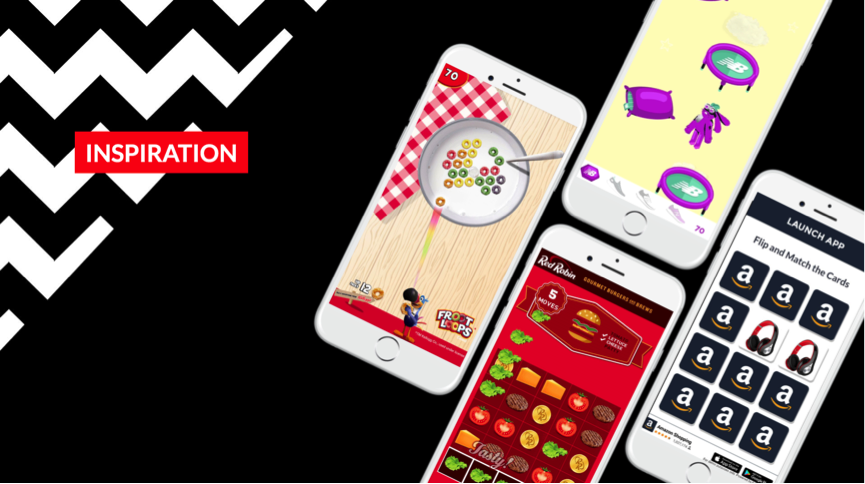Today an increasing number of marketers are turning their attention towards more engaging, visual content to support various content, event driven and data driven marketing strategies. Visual content plays an extremely important role in the customer journey, helping brands to tell their stories and make deeper connections with their customers.
The automotive industry provides great examples of brands harnessing the power of visual content to engage with their audience. Something that may surprise you is that every one of the brands featured on the top 10 selling cars of 2013 list has an active Instagram account. In addition to providing top of the range showrooms for customer to peruse, many automotive brands are now harnessing visual networks like Instagram and Pinterest to successfully create higher levels of audience engagement.
In a previous blog post we looked at visual social media and the impact it has when promoting businesses online- when used in the right manner , the results can be very insightful and rewarding.
A study by PWC revealed that up to 15% of social leads result in test-drives and that only 67 social lead interactions are needed to sell a car. There’s no denying that engagement leads to car sales and one of the best ways to secure it is through visual content.
Why are automotive businesses using visual content?
Did you know that 90% of information transmitted to the brain is visual? How about the fact that visuals are processed 60,000 times faster in the brain than text? Multiple studies have found that people respond better to visual content than text and with knowledge that 93% of human communication is non-verbal, it’s easy to see why automotive businesses are using visual content to engage with their audience.
Visual content like images, video clips and infographics are more engaging and convincing than text-based content. Not only that but they’re also more memorable. For example, an infographic is thirty times more likely to be remembered than a text article.
Visual content can be used by the automotive industry to grow traffic, strengthen branding and improve online visibility. Below we’ve looked into some of the ways automotive brands are using it to their advantage.
Growing popularity of visual social media in the Automotive Industry
In 2014 automotive brands grew their Instagram audiences by an average of 152%. Instagram has been identified as one of the best platforms automotive brands can use to reach a younger audience. After Instagram, Pinterest is generating the highest levels of engagement for car brands, beating leading networks like Facebook and Twitter by miles.
It’s not hard to see why carmakers are doing so well on visual sites like Instagram and Pinterest. These platforms are all about elevating people’s moods and sharing inspiration and that’s exactly what car brands do best. These sites allow brands to tell a story and create an experience around their cars, both of which are vital elements in making sales.
Cars are a passion for a lot of people and sharing passions is what these social networks do well. Brands seeing the most success on Instagram and Pinterest are those that tap into the art of visual storytelling, using their images to engage with the growing community of car lovers.
Aston Martin is a great example of an automotive brand that is ticking all of the boxes on Instagram. The brand regularly shares images that combine cool cars, with exotic travel and celebrities, with its DBS, which has been featured in several James Bond films.Instagram is the go-to destination for car enthusiasts to find great visual content and that’s something brands have capitalised on by creating what could almost be seen as a digital car show. Today many luxury car brands like Audi, Bugatti and BMW, show off their latest models with spectacular photography on Instagram, drawing in an audience from all over the world. Shoot their luxury cars against a scenic background and they can guarantee high levels of engagement from fans.
Get talking- get sharing
It’s important to remember that visual platforms like Instagram and Pinterest aren’t just about attracting audiences with enticing eye candy. More importantly, they can be used to create emotional connections with an audience.
This is something that Volkswagen does very well on Instagram. Instead of simply showing spectacular snaps of its cars, the brand focuses on showcasing and celebrating their fans’ passion for Volkswagen. Yes, their visual content is less about the cars and more about the people behind them.
Volkswagen has even created a series called ‘Driver of the Week,’ which is shared on their Instagram and Facebook page. This series is all about sharing compelling stories (and images) from customers about their experiences with their VW’s. These posts have been found to generate a much higher level of engagement.
Audi is another brand that goes beyond simply sharing attractive images of its cars to engage their audience. You won’t find any promotions, holiday deals or obvious sales-tactics on their Instagram page. Instead, they take a much more human approach to visual content, namely by using content generated by their customers.
User generated content is a great way to boost engagement, as people want to be recognised – it’s what will keep them coming back for more. It also shows how real people are using their cars for real life situations, which provides context and is some you can relate to. This is something that ultimately sells cars as much as status and desire.
Not just about images
Whilst Instagram and Pinterest are great for sharing visual content, it’s important to remember that it’s not just images you can exploit. Other visual content like data visualisation, video and infographics are equally as powerful for businesses in the automotive industry.

One of the best uses we’ve seen of video is Honda’s ‘The Other Side’ campaign, which they created with Wieden + Kennedy London. This interactive YouTube video features a dual-story, where viewers can interactive between an ordinary man driving his Civic and his alternative lifestyle, by simply pressing the ‘R’ on their keyboards. The production and editing are not only stunning but the level of engagement offered by the video is second to none. A great example of how interactive visual content can draw in an audience and enable them to engage.
The power of infographics
It’s no secret that people respond better to visual content and this is one reason why infographics have become such a popular way of communicating and engaging with an audience. These image-based pieces of content essentially allow brands to present information in a way that their audience will be able to easy absorb, understand and remember.
Our client, Classic Car Club, experienced much success with an infographic we created for them on ‘Owning a Classic Car vs. A Classic Car Club Membership.’ The infographic cleverly explored the costs associated with buying a classic car and compared them to buying a Classic Car Club membership; showing an example , in a light-hearted manner, where a Classic Car Club membership actually worked out to be more cost-effective and advantageous to customers.

Infographics are a fantastic way for businesses in the automotive industry to share information with their target audience. They also happen to be highly shareable (helping to reach a wider audience) and great for SEO (boosting your online visibility in search engines).
How we can help
It is clear that within the automotive industry, benefits are being realised by organisations and car brands through the use of visual content- from video to data visualisation, infographics and micro content. If you make your content unique, insightful and engaging you become valuable to your target audience and will stand out. This is something that the team here at VISU.AL can help you with. Browse our website and you’ll see we have plenty of experience in turning well-researched data into powerful visual content for organisations.






